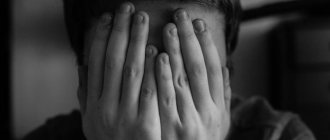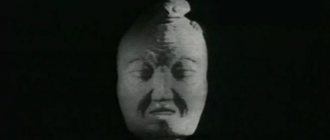A dog is man's friend. The phrase is very hackneyed, however, numerous studies in the field of psychology and psychiatry confirm this idea. Dogs play an important role in people's lives, they are friends, companions, even therapists, and generally helpers in many areas. Nevertheless, there are people who experience insurmountable fear at the sight of our smaller brothers.
What is the fear of dogs called?
What is the correct name for fear of dogs? This concept comes from the Greek κυν - dog and φόβος - fear. Cynophobia is characterized by an inexplicable, uncontrollable fear of dogs.
This pathology has subtypes:
- adactophobia - fear of being bitten;
- Rabiephobia - fear of contracting rabies.
The fear of dogs appears not only in close proximity or contact with an animal, but also when watching films, pictures, videos with it. On average, there are 1.5–3.5% of film phobes worldwide. For the most part, this figure consists of children and young people under 30 years of age.
If the pathology is not treated in a timely manner, then the phobia of fear of dogs progresses. Cynophobia is often observed in hypochondria, senestopathy, and schizophrenia. The risk of getting sick increases with significant overstrain of the nervous system, neuroses, depression, and breakdowns.
Types of cynophobia
Psychoanalysts classify cynophobia into two types - true and false (pseudophobia). True cynophobia is passive and is not accompanied by aggression and hatred. But in patients with hysterical personality disorder, fear of dogs is sometimes combined with outbursts of anger and aggression.
True phobia is divided into two subtypes:
- Adaktaphobia is the fear of a dog bite.
- Rabiephobia is the fear of contracting rabies.
False cynophobia is characteristic of hidden sadists and flayers. Under the fear of dogs, they disguise their hatred, aggression and goal - to inflict torture on the animal and destroy it. With pseudophobia, hatred is directed not only at the dog, but also at its owner.
Attention! It is not always easy to distinguish true cynophobia from pseudophobia, as well as from symptoms of reactive psychosis, obsessive-compulsive disorder and other mental disorders.
Distinctive features of a kinophobe
A person dealing with a phobia does not show aggression towards the animal; on the contrary, he avoids it. Those who pretend to be falsely afraid of dogs can cover up their sadism, carnage, and psychopathy associated with pets with imaginary protection from four-legged animals. Therefore, it is necessary to differentiate true pathology from pseudo-disease.
Also, people who neglect or avoid dogs for their own or religious reasons should not be considered kinophobes. To make an accurate diagnosis, a comparative analysis is carried out:
- anxiety appears at the sight of corresponding paraphernalia, pictures or animals;
- a person avoids meeting a four-legged animal, both realistically and hypothetically;
- identify other mental diseases;
- signs of panic fear should be primary, and not a consequence of delirium or obsessive syndrome.
Additional diagnostic information
A phobia of dogs can only be a symptom of another mental disorder. In this case, it is important to carefully take an anamnesis, because fear of dogs manifests itself in schizophrenia, depression, neurosis, and hypochondria. And besides, experts distinguish between true cinemaphobia and pseudo-kinophobia. Behind the second there are often hidden sadistic inclinations, which a person displays under the guise of “fear of dogs.”
In addition, the causes of pseudocynophobia may be an inferiority complex. It would seem, what does this have to do with it? However, research by specialists confirms that people on an unconscious level feel inferior due to their inability to show the moral qualities characteristic of dogs, such as devotion, fidelity, selfless love, courage, are at risk.
People can become dog hunters precisely for these reasons, while on a conscious level, experiencing fear of stray dogs. People with pseudocynophobia often come into conflict with animal owners and behave extremely aggressively.
In order to clearly separate psychopathic individuals, patients with schizophrenia or another disorder from kinophobes, it is worth knowing what specifically characterizes the disorder.
- Dogs should be the patient's only fear. If he is characterized by anxiety attacks not only in situations related to dogs, then cynophobia is not diagnosed.
- Physical and mental symptoms of panic fear are primary. If these are only the consequences of OCD or schizophrenic delusions, then we are not talking about any kind of cinemaphobia.
- The patient demonstrates avoidance behavior. Aggressive behavior towards the object of fear indicates pseudophobia.
Causes of phobic disorder
It is not enough to know what a phobia/fear of dogs is called; you also need to understand the causes of the pathology. The main ones include:
- heredity. Often various phobias are transmitted genetically;
- overprotection. When parents constantly protect the baby from contact with an animal, saying that the dog is sick or might bite;
- inferiority. A person understands that he cannot be faithful, affectionate, and devoted like a pet.
Moreover, in the presence of the above problems, the provoking factor may be hormonal imbalance, difficulties in life, chronic stress, and certain medications.
By the way, studies have shown that the main version about the development of pathology as a consequence of a bite is groundless. Those who have experienced dog aggression rarely become cinemaphobes. Gradually, they can only exercise caution when they see large breeds of dogs or in case of a real threat.
Causes of fear
Quite often, the reasons for the formation of phobias are some kind of personal negative experience. In the case of cynophobia, this can also occur, however, it is not considered the main reason. Based on research, the majority of kinophobes have never been subjected to aggression from dogs , and a sufficient number of those who have been bitten by dogs subsequently, if they show wariness towards dogs, then only objectively aggressive and large ones. What mainly influences the occurrence of a phobia? These are genetic, personal and social factors.
In previous articles we have already mentioned that anxiety-phobic disorders are quite often genetically determined. Cinemaphobia will be no exception. And the combination of hereditary predisposition with the appropriate upbringing of parents gives a logical result. This is especially true for the overprotective behavior of a mother who is herself afraid of dogs.
First of all, following behavior is activated, and the child simply copies what the mother does. And secondly, if a child does not feel fear of a yard dog and fearlessly interacts with him, the parent’s intimidation can form a phobia: “Don’t pet him, he’s flea-infested!” If it bites, you will need 40 injections in the stomach for rabies!”
These completely exaggerated precautionary methods are stored in the child’s memory and at a certain moment can “shoot” into a phobia. A provoking factor can be a difficult period in life, chronic stress, hormonal imbalance, taking any medications and much more.
Manifestations of cynophobia
Dog phobia is the name of a disease that manifests itself in uncontrollable panic at the sight of a four-legged animal. Such a person may change his route if there is a potential threat ahead. The irrationality of behavioral reactions largely depends on the severity of the pathology. Fear of dogs makes us “climb trees” even from small harmless dogs.
Vegetative manifestations include:
- tachycardia;
- trembling;
- changes in blood pressure;
- pallor of the integument;
- increased sweating;
- frequent urination;
- discomfort in the sternum;
- muscle structure tension;
- dry mouth;
- difficulty breathing.
In advanced cases, the fear of dogs provokes panic attacks.
On the part of psychological discomfort, there is irritability, wariness, deliberation, constant mental replay of unpleasant events that do not exist or happened in the past.
Types of cynophobia
There are two main types of cynophobia: imaginary, or false, and true. It is in the presence of a true phobia that fear appears when meeting a four-legged friend. This form of phobia can have the following manifestations:
- fear of only large or only small animals;
- fear of a specific breed, for example, Alabai;
- fear of meeting a pack of stray animals;
- fear of pain. In other words, a person is afraid of being bitten.
Mini Doberman (dwarf): what is the name of the breed
In addition, a phobia can manifest itself as a fear of contracting a disease as a result of a bite, such as rabies. A true phobia manifests itself in the form of a panic attack, which is difficult for a person to control.
The psychosomatics of a false phobia are much more complex and manifest themselves as a mental deviation. In this case, the person has an aggressive attitude towards animals. There is no difference in breeds or sizes. Many psychologists believe that the manifestation of a false phobia is a reaction to concealing one’s own sadistic tendencies.
Important! False cynophobia often finds its manifestation in mass shootings or poisoning of both stray and domestic animals.
People with such tendencies are dangerous not only for pets, but also for their owners.
Can a dog sense human fear?
Many people think about how to overcome the fear of dogs, because, according to popular belief, four-legged animals feel this due to the release of adrenaline at this moment. In fact, the hormone does not activate receptors responsible for aggression, which is confirmed by many specialized studies.
Dogs react not to the fear itself, but to the client’s behavior. He begins to worry and get nervous, this manifests itself in gestures, facial expressions, movements, and screaming. It is this process that causes aggression. Therefore, you need to fight not with the release of adrenaline, but with your own emotions.
Causes of phobia
It turns out that the panicky fear of dogs is not always associated with negative contact with this animal in childhood.
- The occurrence of the disorder is primarily influenced by the presence of a fear gene or genetic predisposition;
- The second most important reason is the child copying the behavior of the parents and their fear;
- The reason may be the special personal characteristics of a person coupled with an inferiority complex.
You can fight cynophobia and at its initial stage you can do without the help of a specialist. Let's find out further how to stop being afraid of dogs.
How to behave when you see danger?
When thinking about how to get rid of the fear of dogs, you should also study the rules of behavior around an aggressive animal. Attention should be paid to:
- sight. In order not to provoke the dog, you should avoid direct eye-to-eye contact;
- calmness. The animal will not like sudden movements of arms or legs. Running is also a bad option;
- facial expressions A grin or grin can evoke associations with the display of fangs and serve as a signal for battle;
- other subject. If you carefully throw something to the side, you can get the dog’s attention to switch to the object.
If the dog does attack, then you need to try to neutralize it with a kick to the nose.
Body reaction
It is worth noting that fear of dogs is classified as a number of irrational fears, special psychological ailments, due to the development of which a person is terrified of approaching a dog. Fear of dogs may be based on another, more serious psychological illness.
It is necessary to understand the difference between a fear of dogs and a normal instinct of self-preservation. After all, if a dog attacks you, naturally you will retreat. A completely different situation is when at the same moment you feel an increased heartbeat and run headlong. This is a manifestation of fear.
Fear of dogs is also called “cynophobia”. Medical practice emphasizes that fear of dogs is a psychological disorder that should be treated. According to medical research, it is known that approximately 3% of the world's population suffers from dog phobia.
Today this figure is much higher, because the fear of dogs is divided:
- identify a true psychological disorder. This is a kind of hysteria in its initial stages. When thinking about dogs, people feel inner discomfort and fear. Because of this, this category of people often avoids any contact with four-toed animals. When meeting, a person cannot control his emotions and actions. Even products intended for dogs, or people who keep them in their homes, cause hostility;
- It is also worth highlighting false fear. That is, it is also a psychological disorder, just from a slightly different area. This concerns cruel, sadistic treatment of animals. This category also includes those people who are afraid of animals because of religious views and certain beliefs.
Experts divide the fear of dogs into two concepts: adaktophobia and rabiephobia. The first term refers to the fear of bites; in the second case, the person is afraid of contracting rabies.
These types of fear of dogs can develop after experiencing a strong emotional outburst. Often the fear of dogs is a continuation of the development of a certain psychological disorder that was not completely cured at the time. Schizophrenia or other psychological phenomena can trigger the development of the disease fear of dogs.
Ways to get rid of a phobia
Ways to get rid of the fear of dogs:
- work with a psychologist;
- hypnosis;
- drug therapy.
The duration of treatment can last about a year, it depends on the desire, actions of the client himself and on how much the phobia of dogs has “paralyzed” the psychological space.
Antidepressants and tranquilizers are prescribed as medications. Such drugs have a number of side effects, especially in case of overdose, so only a specialist can prescribe and monitor the treatment process.
Of the total number of patients with cynophobia, about 10% need the help of a psychotherapist. However, the experience of a specialist is very important. Being in this position, the client is not always ready to leave his home to seek salvation from the outside, so you can contact a specialist online, for example, psychologist-hypnologist Nikita Valerievich Baturin.
Diagnosis of a phobia
Diagnosing the disorder is very simple; you just need to honestly answer the question: “Am I afraid of dogs?” and “how much am I afraid of dogs.” Any psychologist or psychotherapist will make a diagnosis in a matter of minutes.
To successfully overcome a phobic disorder, it is necessary to determine the causes of its development. This will require time and a long conversation with the doctor. It is good if the moment when the dog suddenly began to pose a danger and a threat to health is clearly imprinted in the patient’s mind. If the cause of fear is not obvious and is rooted in early childhood, deep work with the subconscious and a hypnosis session may be required to determine it.
Features of dealing with dog fear
Fear of dogs can be treated with:
- image processing. The client looks at the photos of the dogs, sharing his emotions with the specialist;
- transformation methods. At the moment of contact with an animal, you need to mentally transfer yourself into the role of an object that is not of interest to the dog;
- working through positive facts. The specialist teaches you to treat your pet as a friend. To do this, watch relevant films and read the necessary literature;
- contact with the puppy. Unlike the big dog, this creature looks cute, helpless, harmless. This tactic can help overcome panic.
How to remove “neglected” fears
There are many ways to overcome fear. However, an advanced case must be treated. In some cases, a person may need specialist help and medication.
Exercise "Achilles' heel"
This exercise will require help from family and friends. It is necessary to interview them about the encounter with an aggressive animal. If there are those who actually experienced a similar situation, it is necessary to write down all the emotions, experiences they experienced, and most importantly, how they behaved in a similar situation.
Then a description of your own behavior and feelings is compiled. A comparative analysis is carried out with what a person suffering from a phobia and his acquaintance experience. What are the similarities and what are the differences. All this is necessary to formulate the thesis: “Unlike other people, when I meet a dog I experience...”
It is precisely this feeling that will be the “Achilles heel”. The benefit of identifying the main point is that a person will be able to simulate another situation in which the outcome will be positive.
Important! It must be said that performing the “Achilles Heel” exercise is not as easy as it seems. It is necessary to clearly name your main fear and try to overcome it, at least mentally.
Psychological techniques
Seeing a psychologist is the most reasonable way to deal with a phobia. There are several options for treating fear:
- Correction of attitude towards the threat. The specialist finds the main component of the phobia and changes its perception.
- Forming the ability to adequately respond to a situation. This method is commonly called rational psychotherapy.
- Relaxation is a special relaxation technique.
- Hypnosis is an effect on a subconscious level.
In severe cases, the help of a psychiatrist may be required
Phobia in a child
Children tend to be afraid of things that seem trivial to adults. A very big part of this fear is the fear of dogs. If the phobia does not go away, then very soon it can develop into a real disease.
When communicating with a baby, you should not devalue or ridicule his fear. Attempts to forcibly reconcile a child with a pet, for example, by persuading him to pet him, can result in an even deeper deepening of the problem. He will not stop being afraid, but on the contrary, he will still consider the people closest to him as traitors.
Therefore, the best option would be to contact a psychologist-hypnologist to resolve the situation. In this case, overcoming the fear of dogs will be done with gentle measures, through fairy tales and art therapy.
If the baby does not have panic fear, then you can offer to get a puppy. The little pet will grow up with the baby, giving him a lot of positive emotions. At the same time, you should not buy a four-legged animal without the child’s knowledge; everything should happen with the child’s consent.
Genetic factors
Beethoven (dog): what breed, what is it called
Fear of dogs is still partly due to genetic predisposition. However, this is only a small part of the system that forms the ultimate fear. As already mentioned, relationships and communication with parents play a great role in the formation of behavior patterns. If a mother or father suffers from cynophobia, then they will pass this fear on to their child at the genetic level. However, it may not develop if it is not reinforced from the outside.
Independent measures to combat cynophobia
How to get rid of the fear of dogs yourself:
- Review your diet. An incorrect menu leads to disruptions in the balance of carbohydrates, proteins, fats, vitamins and minerals, which provokes disruption of the functionality of the central nervous system and brain. Physiologically, this is expressed by anxiety. A diet for fear of dogs is aimed at increasing the number of carbohydrates in the diet. They secrete tryptophan, which is converted to serotonin.
- Normalize sleep and rest patterns. Mental fatigue is no less dangerous for the brain. You need to sleep 8–10 hours. If mental work predominates, then physical activity should be introduced in your free time. It is better to avoid delays at work and additional work at home.
- Workout. The type does not matter, it can be swimming, gymnastics, athletics or any other. Sports walking in the fresh air also helps eliminate anxiety and improve central nervous system activity.
- Find a hobby. Doing what you love improves your mood, self-esteem, and distracts you from bad thoughts.
- Take time for self-discovery. Daily training in this field can bring considerable results. Self-improvement and knowledge of your spiritual self allows you to find harmony of body, soul, mind, reveals hidden talents, and brings you closer to the world around you.
- Work on your consciousness. You need to try to imagine yourself as the owner of a dog. By gradually cultivating it in your imagination, you can raise a large and strong pet, but with good thoughts and morals.
- Find a weak point in the subconscious. In psychological practice, this exercise is called the “Achilles heel.” The principle of working on yourself is to compare associations in the presence of fear. That is, a person must explain what exactly he is afraid of when he sees a dog, and what he feels at that moment, what he wants, who in his mind can help solve the problem. Having understood these principles, a scenario is built for a meeting between a film-phobe and a loved one with an animal. Moreover, in this case, the four-legged one experiences fear, and the “guard” present in the thoughts provides support and protection to the client. Sometimes long training is required before a person can overcome his problem. If you concentrate on your own fear of dogs, then stop the exercise and repeat it at another time.
A phobia of dogs is expressed in a vivid panic fear of a pet. Cinemaphobes avoid not only animals themselves, but also all possible reminders and associations with them. You can overcome fear on your own by changing the principle of life, diet, and playing sports. In case of advanced pathology, a psychologist-hypnologist will help with this. If you ignore the problem, it will unbearably infringe on the person and lead to his isolation from society.
How to get rid of the fear of dogs
Cynophobia usually manifests itself in childhood and adolescence and can drag on for many years. As we have already said, dog phobia is a mental disorder, so it must be treated without triggering or provoking negative consequences.
Cure has a high probability, however, in severe cases it can take up to one year. Psychotherapy is used to combat dog fear.
The best results in eliminating the symptoms of phobias are most often demonstrated by cognitive-behavioral methods; they are aimed at changing the “wrong” thoughts in the patient’s head and reinforcing the desired behavior. However, other psychotherapeutic techniques are also used, such as hypnosis, for example.
To get rid of severe forms of phobia, pharmacotherapy is used in combination with psychological help. Various types of antidepressants (monoamine oxidase or serotonin reuptake inhibitors) and benzodiazepine tranquilizers may be prescribed. Treatment is carried out only under the supervision of a psychotherapist or psychiatrist, because such medications have side effects.
If we talk about the initial stages of a phobia, then you can overcome fear on your own. In this age of anxiety, managing stress is becoming more and more difficult. Up to 3% of the population suffers from cynophobia, but only 10% of them need medical help. Others will be able to get rid of fear by reviewing their lifestyle and consulting with a psychologist.
Many people become so immersed in an uncomfortable state that they stop even noticing it and only realize it when their body malfunctions. This can be expressed in neuroses, psychosomatics, and phobias.
In order to avoid this, watch your diet, sleep, work and rest. Spend more time outdoors, communicate with people, engage in physical activity and don’t forget to please yourself. Constant mental stress negatively affects all areas of life.
Factors that shape fears in dogs
The main reason for fear of people on the streets is rough treatment of a pet at an early age. Fear can be expressed in different ways. The dog clings to the owner, tries to hide behind his legs, or rushes and barks at everyone he meets. This behavior is formed in puppies who, during the period of socialization, did not see strangers and communicated only with the owner.
The cause of fear may be a weakened nervous system. This is an innate character trait. As these pets grow older, they begin to develop various phobias. Eliminating such pathologies is extremely difficult; you will have to spend a lot of time and effort.
In some cases, it is impossible to determine the cause of fear or phobia. For example, a dog is afraid of one of the family members who has a loud voice or is tall. The dog is afraid of strangers with such qualities.
Somatic pathologies
Endogenous depression in dogs is a disease that is provoked not by external causes, but by internal processes. There is a balance of neurotransmitters in the brain (serotonin, norepinephrine, acetylcholine, and others), and if it is disturbed, a disorder comparable to depression develops.
The reason for this imbalance may be:
- skull injury;
- brain tumors;
- stroke;
- endocrine diseases;
- some viral infections.
Worth seeing: Endogenous depression
In this case, you need to treat the root cause of depression, or adapt the animal’s life to new physiological factors.
Eliminating fears of unfamiliar terrain
Not every pet easily and quickly masters new territories. For some dogs, such changes can cause panic. There are recommendations from professional dog handlers that allow you to cope with this problem. One effective way is to regularly create situations that cause fear. You can eliminate the phobia gradually if you take the dog with you everywhere: on a trip, to the dacha, on a visit, to the forest, etc. Over time, the pet will understand that someone else’s environment is not dangerous, there is no reason to be afraid.
The owner needs to monitor the dog’s emotions in such situations. If he begins to develop a feeling of anxiety, you can lightly slap him on the back with your palm several times. This gesture will show the dog that he can calm down, everything is fine. When going for a walk, you need to grab a treat, your dog’s favorite toy. They will help distract the dog if it gets scared and starts to panic.
If you cannot cope with fears in these ways, you need to find the owner of a brave, self-confident dog and take walks together. The calmness and courage of a friend will definitely be transferred to the pet.
If you had to move to a new place, and the dog is terrified of a foreign area, you should try to smooth out the contrasts. To do this, you need to maintain the same routine of walking and feeding, at least at first. You can come to a convenient schedule gradually by shifting the time by a few minutes. This will help reduce the intensity of stress. During the adaptation period, more time should be allocated for caring for the dog and playing together.
Unfortunately, sometimes a dog has to change not only its place of residence, but also its beloved owner. You need to prepare for the fact that the dog may have a desire to run away in search of its previous owner. Therefore, it is impossible to leave him alone on the street during this period. The pet may have a feeling of hostility towards the new owner, even with careful care. You should not be offended, you need to be patient, try to please the dog, create maximum comfort, and give food often. You can feed the dog by hand to establish contact. During the first weeks, you need to spend as much time as possible with your pet and be close.
How does cynophobia manifest itself?
Kinophobia can be recognized by the following manifestations:
- Intense, persistent and pointless anxiety, not necessarily in the presence of dogs, but sometimes at the mere mention of them, at the sight of a picture, or even at the sound of barking.
- Sleep disturbances (difficulty falling asleep, a person often wakes up, has nightmares, which makes fear even more intense).
- Bodily discomfort (sweating, muscle tension, trembling, pain in the heart, “tightness” in the chest, feeling of shortness of breath, dry mouth, rapid heartbeat, dizziness, nausea, etc.)
- Alertness, nervousness, irritability, desire to control everything.
- A feeling of impending danger.
Sometimes panic attacks are observed, in which a person thinks that he is going to die.
Photo: google
Is it possible to cure cynophobia?
As with many phobias, psychotherapy and (if necessary) medication
They help, if not get rid of fear, then at least significantly reduce the intensity of its manifestations, and therefore improve the quality of life. After all, like any phobia, cynophobia significantly affects a person’s life and introduces many restrictions into it.
First of all, you need a desire to get rid of this condition. And then find a competent specialist who will help you.
You will probably have to contact both a psychotherapist, who will prescribe the necessary medication treatment, and a psychologist, who will conduct psychotherapy (mainly, the desensitization technique is used).
It is impossible to cure cynophobia without the help of specialists. But there are ways to alleviate the condition
and speed up recovery.
- Changing your diet. Foods containing large amounts of carbohydrates help produce tryptophan, which, in turn, is converted into the pleasure hormone serotonin.
- Reducing the load, increasing rest, changing activities.
- Physical exercise. Exercise is a great way to cope with anxiety. Swimming or long walks are great.
- Little joys for yourself. Be sure to find time for things that bring you pleasure. Maybe it's time to get a hobby if you don't have one yet?
- Meditation classes.
Sometimes those who are afraid of dogs are advised to “knock out a wedge with a wedge” and get a dog. However, this method of dealing with cynophobia does not always help and can cause the condition to worsen, so before you decide to take such a step and become a dog owner, you should still consult with a specialist.











